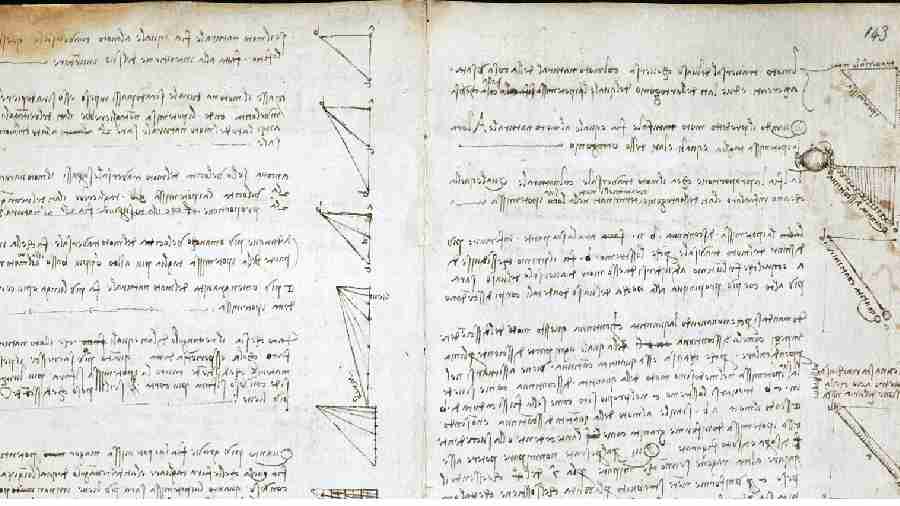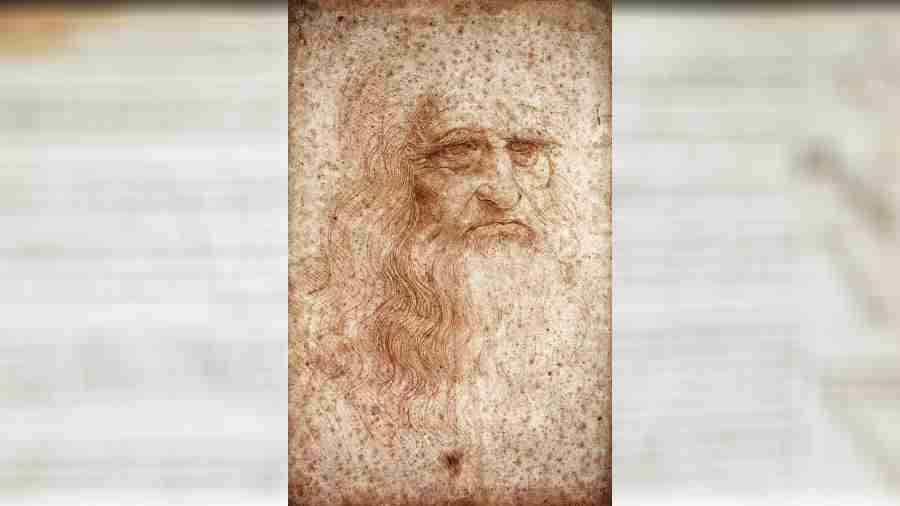When Leonardo da Vinci wasn’t painting a masterpiece or dreaming up flying machines, he was pondering the mysteries of gravity. The Renaissance thinker considered himself as much a man of science as an artist and spent untold hours exploring how the “attraction of one object to another” could affect such things as the flight of birds and the fall of water.
Now, scientists have discovered that Vinci did detailed experiments that sought to illuminate the nature of gravity a century before Galileo and about two centuries before Sir Isaac Newton’s, making its investigation an exact science. The scientists’ study of his gravitational ideas and experimentation was published in Leonardo.
“Nothing could stop him,” Morteza Gharib, an author of the paper and a professor of aeronautics at California Institute of Technology, US, said in an interview. “He was far ahead in his thinking. It could not wait for the future.”
Z. Jane Wang, a professor of physics at Cornell University, US, who has studied some of Vinci’s pioneering analyses but was not involved in the current paper, said the new study revealed a man determined to find an iron law of nature that would shed light on the overall dynamics of falling objects.
“It’s not enough” to call the polymath an artist, Wang said. More accurately, she added, he was “a quintessential” man of the Renaissance, which gloried in the revival of not only art and literature but also science and explorations of nature.
Vinci has long been famous for his technical ingenuity and versatility, and for his sketches of flying machines and fighting vehicles. He also made advances in geology, optics, anatomy, engineering and hydrodynamics, the arm of science that explores the behaviour of fluids.
Vinci has long been famous for his technical ingenuity and versatility, and for his sketches of flying machines and fighting vehicles. He also made advances in geology, optics, anatomy, engineering and hydrodynamics, the arm of science that explores the behaviour of fluids.
Gharib said he learned of Vinci’s gravity experiments while examining an online version of the Codex Arundel, named after a British collector, the Earl of Arundel, who acquired it in the early 17th century. Vinci composed the collection of hundreds of papers between 1478 and 1518 — that is, between the ages of 26 and 66 — the year before his death. The papers reside in the British Library. The collection features his famous mirror-writing as well as diagrams, drawings and texts covering a range of topics in art and science.
What caught Gharib’s eye is what he calls “a mysterious triangle” near the top of Page 143. Its strangeness lay in how Vinci’s sketch showed an adjoining pitcher and, pouring from its spout, a series of circles that formed the triangle’s hypotenuse. Gharib used a computer program to flip the triangle and the adjacent areas of backward writing.
Suddenly, the static image seemed to come to life. “I could see motion,” Gharib recalled.
In gazing at the drawing, Gharib realised he had managed to split the effects of gravity into two parts that revealed an aspect of nature normally kept hidden.

A mysterious triangle on Page 143 of The Codex Arundel shows Leonardo da Vinci deconstructing gravity
The first effect was the natural downward pull. The second was added when the holder of the pitcher moved it along a straight path parallel to the ground, pouring out sand or something else along the way. In the drawing, Vinci noted where the movement of the pitcher had begun, labelling it with the capital letter A. Then, to show the falling material, he added a series of vertical lines going down from the triangle’s top line, the series getting longer as the pitcher moved farther and farther from its starting point. Their growing lengths defined the hypotenuse.
The setup turned gravity’s hidden nature into visible increments. The pitcher experiment, Gharib said, revealed that gravity was a constant force that resulted in a steady acceleration — a steady gain in speed. Vinci illustrated the gain as the pitcher’s contents falling lower and lower over time. He succeeded in deconstructing gravity.
The researchers say Vinci wrote in the codex that he witnessed fast-moving clouds from which pellets of hail had fallen, which they believe inspired the experiment.
Gharib said “the fascinating part” of Vinci’s feat was that it let him estimate a constant of nature, the gravitational constant, represented today in physics by the letter G. The constant quantifies the exact strength of gravity’s pull and thus how quickly it can accelerate an object.
Despite the crudeness of his experimental setup 500 years ago, Vinci, Gharib said, was able to calculate the gravitational constant to an accuracy within 10 per cent of the modern value. The researchers say that Galileo and Newton could better address the gravitational question because they had better tools of mathematics and better ways of measuring time precisely as objects fell.
Gharib agreed with Wang in seeing Vinci as far more than an artist and suggested that his fame as a pioneering scientist could skyrocket if more technically knowledgeable experts probed the Codex Arundel and other sources. In his biography, Isaacson reports that more than 7,200 pages of Vinci’s notes and scribbles survive to this day.
NYTNS











